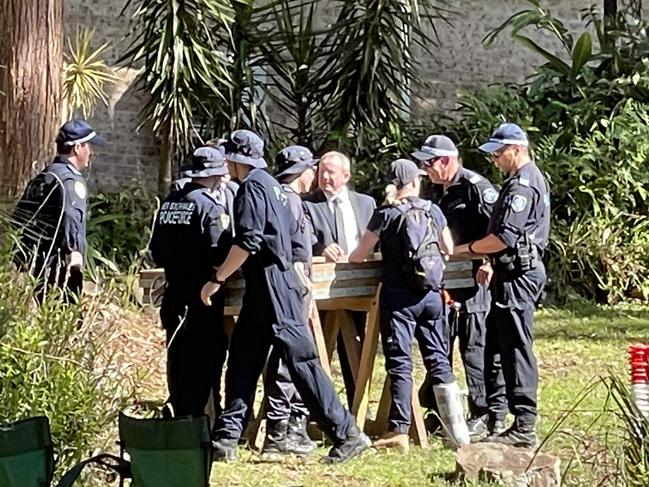William Tyrrell search: Police to comb Kendall bushland
Police and cadaver dogs are searching under the balcony of the home where missing toddler William Tyrrell was last seen, with investigators looking into the theory he may have died accidentally before being removed from the scene.
Mid-North Coast
Don't miss out on the headlines from Mid-North Coast. Followed categories will be added to My News.
Police have returned to the home where William Tyrrell was last seen as they investigate the theory that the youngster could have died accidentally or from misadventure before his body was disposed of.
It is understood one line of inquiry being investigated by detectives is whether William died as a result of a fall from the balcony, before his body was moved to another location
Hundreds of police and emergency services have converged on Kendall for a search at two sites they believe are significant in their search for what happened to William seven years ago.


It includes specialist police at the former home of William’s foster grandmother – the site where he was last reportedly seen and the scene of the massive search which has continued since 2014.
A cadaver dog has been sent over ground across the sprawling property on Benaroon Drive, including a garden bed which is directly under a balcony several metres above.
They have pulled out plants and are slowly sifting through dirt as they look for any evidence related to Willian’s disappearance.
The second site is less than a kilometre away in dense bushland off Batar Creek Rd.
Rural Fire Service personnel and police have now cleared one side of the waterway adjacent to Cobb and Co Rd ready for an excavator to be brought in.
Both sides of the waterway will be cleared in coming days.
Head of Strike Force Rosann, Detective Chief Superintendent David Laidlaw, joined other homicide squad detectives at tbe Batar Creek Rd site as the undergrowth was cleared.
An area of about 10 metres from Cobb and Co Rd has been cleared as well as steep banks to the creek.

An anthropologist, archaeologist and water scientist are on scene to assist in the search, which could last several weeks.
The specialists may be able to advise searchers on water and soil displacement, with a small waterway running through the areas in question.
Heavy rain and flooding since William’s disappearance could mean saturated soil has allowed anything on top of, or just under, the earth has sunken further into the ground or been displaced.
The search comes as Strike Force Rosann detectives continue to investigate several theories in William’s disappearance and suspected death.
They include whether he may have died accidentally or from misadventure before his body was disposed of.

Benaroon Drive resident Viv Gunter, who has lived across the road from the former home of William’s foster grandmother for two years, said he was surprised by the new claims.
“I actually I didn’t think this new evidence would lead back to the house,” Mr Gunter said.
“It seems a bit strange to me.”
Mr Gunter said William’s disappearance remained a focus for the people of Kendall.
“It is still fresh in people’s minds around the town. We were not here at the time they still speak about it.”
The land off Batar Creek Rd at Kendall will become a place of intense police scrutiny in the next few weeks as a team of specialists assist in searching for the remains of William Tyrrell.
And it will be a mixture of brute muscle and the latest technology which Strike Force Rosann detectives hope will uncover more secrets in their hunt for answers.
Rural Fire Service personnel will return on Tuesday morning to use heavy-duty whipper snippers to get rid of dense undergrowth before the earth begins to be turned over.
An excavator is due at the site on Tuesday morning.


The area is less than a kilometre from where William vanished from his foster grandmother’s home on Benaroon Drive.
Batar Creek Rd runs out of Kendall and is a busy thoroughfare for such a small town.
But where police are searching surrounds a natural dip in the road where a small watercourse flows underneath, perhaps a good spot to discard the body of a young boy in a rush.
To assist the hundreds of police and emergency services at the scene will be a specialist hydrologist, archaeologist and forensic anthropologist.

Professor Jon Olley, a water scientist and hydrologist who helped retrieve the remains of Daniel Morcombe in Queensland, will be able to offer counsel on movement of soil around the waterway since William disappeared.
It includes what has occurred to the soil during heavy rain and floods.
Archaeologist Tony Lowe and forensic anthropologist Penny McArdle, who has been used in the search for the remains of two missing Lake Macquarie girls, will also be on site for advice on the digs as well as any remains if they are found.
They will use a grid system as they begin turning over and sifting the three areas within the small area of bushland.
It will be painstaking and will take weeks.




